What I relish most about my pollinator garden is the three-ring circus of clowns, acrobats, contortionists and other performers. While nurturing a garden habitat that gives native bees a place in which to live, eat and raise their young, we also get to watch the wacky show. With over 1,600 species of native bees in California alone, here is a tiny sampling of bee species and their most delightful and downright silly “bee-haviors.”
How to Design a Garden for Native Bees
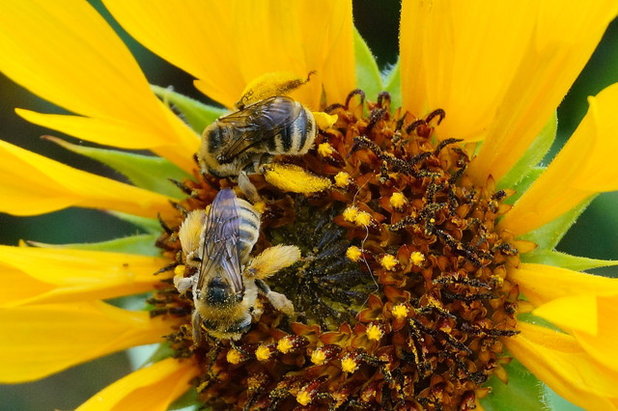
Debbie Ballentine
Picky eaters bee-havior. Some bees are generalists, feeding from a wide variety of flowers. These female sunflower bees (
Diadasia) are specialists, eating nectar and pollen only from sunflowers (
Helianthus annuus). They seem to like both the agricultural sunflower and its native ancestor, pictured here. The girls are collecting pollen and sipping nectar on delta sunflowers in my home garden.
How to Grow Sunflowers
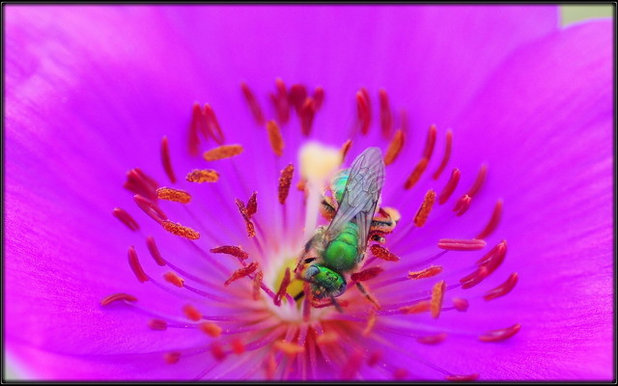 Swapping sweat bee-havior.
Swapping sweat bee-havior. Sweat bees are named for their inclination to imbibe sweat. This ultragreen sweat bee (
Agapostemon texanus) is the stunning jewel of the group. (I promise he won’t bite if he lands on your sweaty arm after a workout.)
Photo by tdlucas5000, Flickr
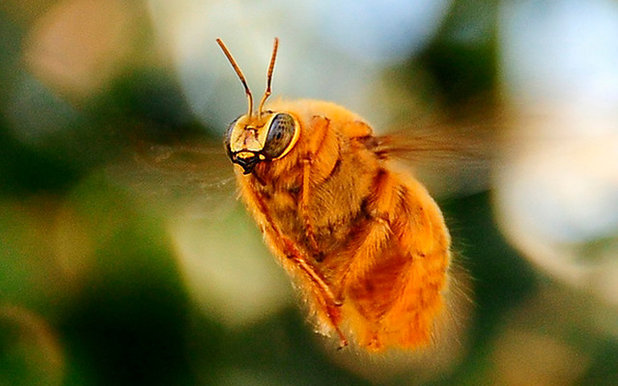 Cruising bee-havior.
Cruising bee-havior. Like the guys in their hot-rod cars, many species of male bees cruise for girls. You’ll see male valley carpenter bees (
Xylocopa) — also called teddy bear bees — hovering and zooming around in an area about 3 to 4 feet in diameter. Sometimes they’ll come up to you and check you out. No need to worry; you are just a curiosity to them. This is territorial behavior of male bees looking for available females, and it’s their bully stance to chase off other interested males. What a bravado match to watch when there’s more than one male in the same territory!
Photo by tdlucas5000, Flickr
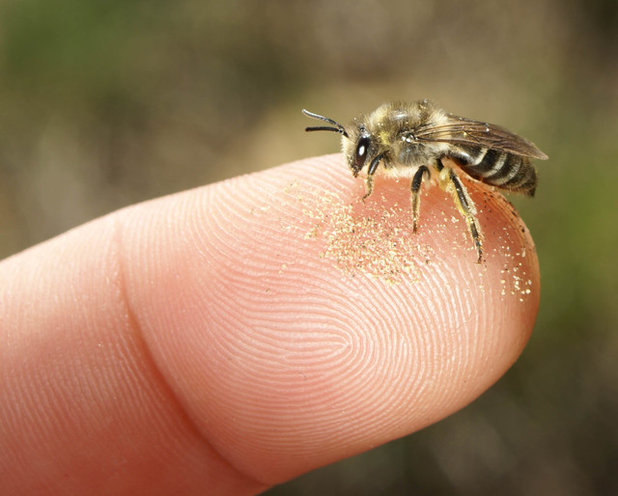 No-sting bee-havior.
No-sting bee-havior. All male bees of any species have no stinger, including honeybees. And most female native bees have no colony to defend. Therefore, it’s not likely you’d get stung by a native bee. You’re more likely to be bitten by a yellow jacket, a wasp commonly mistaken for a bee. (You know, the ones attracted to your soda and burger at a barbecue.) Native bees, on the other hand, are docile and very content to sip on your flowers.
Photo by Rob Cruickshank
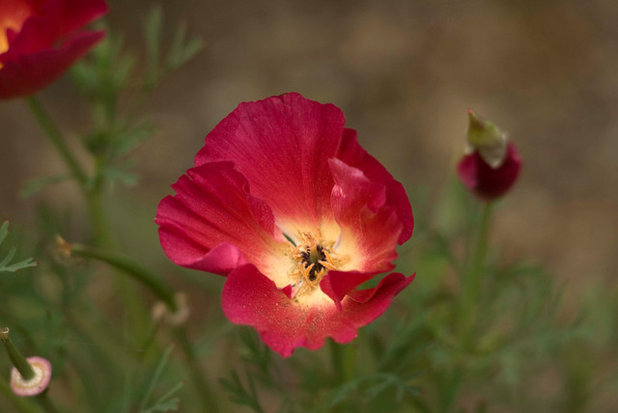
The New York Botanical Garden
Tumbling bee-havior. The cup-shaped California poppy is one of the more popular annuals for native bees. This photo of ‘Apricot Chiffon’ (
Eschscholzia californica ‘Apricot Chiffon’) is one of several cultivars of poppies. Until you have your own native bee garden, you’ll have to imagine the bees feverishly and comically rolling around inside the cups, covering their entire bodies with pollen.
How to Grow California Poppy
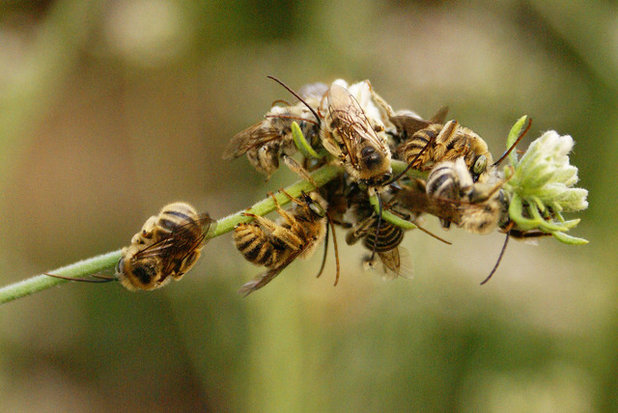
Debbie Ballentine
Guy-sleepover bee-havior. OK, I know it sounds weird. After a long day of intimidating one another, these male long-horned bees (
Melissodes) sleep together in groups. I found these guys on California buckwheat (
Eriogonum fasciculatum) in my home garden. The next day all the head-butting and scare tactics started again. It’s like Sunday football when the armchair jocks get together to jostle one another with gruff banter. Then they laugh and promise to do it all again the next week.
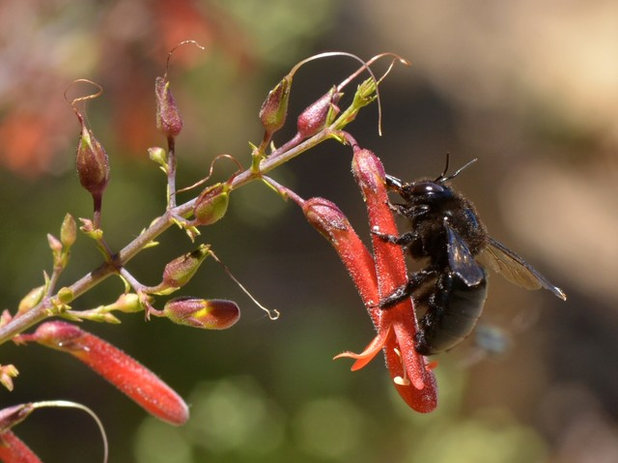
Treebeard
Stealing bee-havior. Nectar robbing is a known practice among the larger bees. We consider it stealing because plants evolved to offer nectar as a reward for insects who pollinate their flowers.
Here you can see that the northern blue-stemmed keckiella (
Keckiella ternata ssp.
septentrionalis) has evolved to have a red tubular flower specifically for the hummingbird’s long, narrow beak. Yet this stealthy female carpenter bee (
Xylocopa) is piercing a hole to rob the liquid candy hidden inside — without ever providing her pollination services.
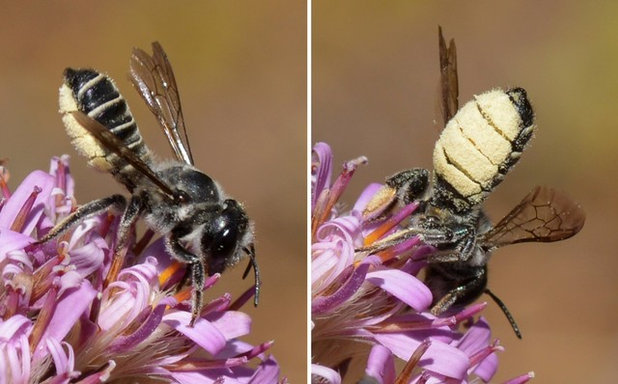
Treebeard
Butts-up bee-havior. This megachilid bee (
Megachilidae) on California native sacapellote (
Acourtia microcephala) collects pollen on the hairs under her belly. As the circus clown, she does not need a reason to hold her cache of gold so high.
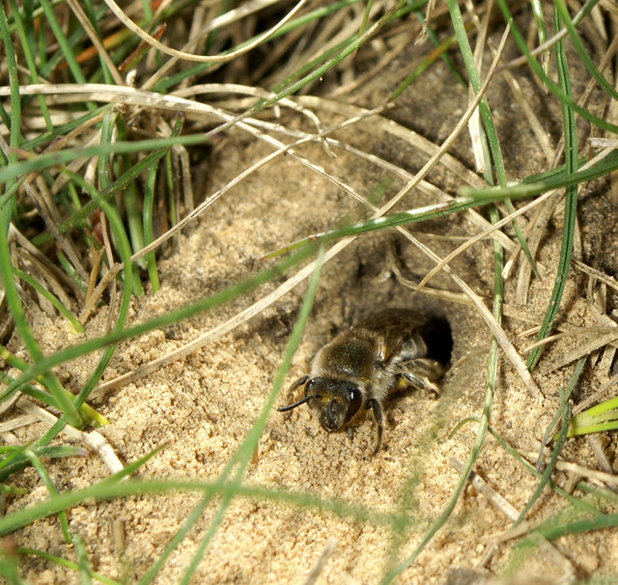 Nesting bee-havior.
Nesting bee-havior. Unlike European honeybees — which live in groups inside hives — most native bees are solitary and nest in the ground.
Ground-nesting native bees dig holes or use vacated holes for their nests. Keep in mind that these bees won’t make their nests in layers of mulch. Be sure to leave sunny areas of bare dirt in your garden so they have places where they can make homes for their young.
Other species of native bees nest in plant material cavities or wood. They also use human-made nests, which are easy and fun to make.
Photo by Rob Cruickshank
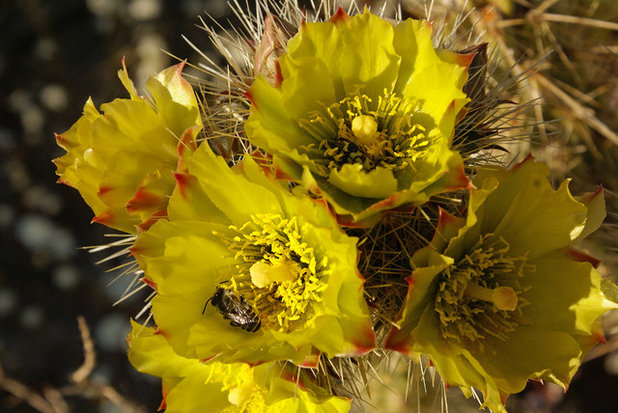
Debbie Ballentine
Napping bee-havior. My husband and I have a joke: How can you tell a male bee from a female bee? The male bee naps while the female works. It’s not sexist when it comes to bees. Females have a family to feed. They collect pollen and nectar for themselves and their young, whereas male bees need to feed only themselves. You’ll never see a female bee taking a nap. The male bee seen here is sleeping inside of a cholla cactus flower (
Cylindropuntia) in the hot California desert sun.
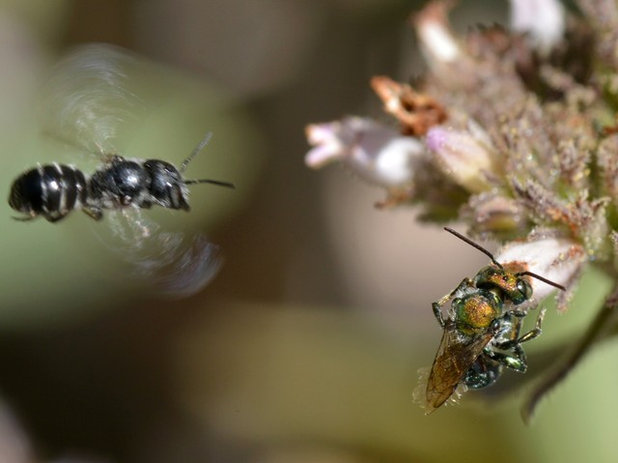
Treebeard
Head-butting bee-havior. Many species of male bees will try to knock the other guys off the flowers with head-butts. I have no doubt that’s about to happen here, with the Megachilid bee (
Megachilidae) on the left targeting a sweat bee (
Halictidae) on the right.
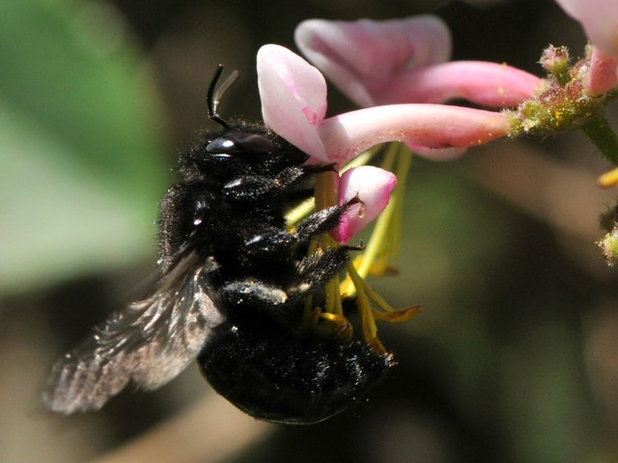
Treebeard
Singing bee-havior. This female carpenter bee (
Xylocopa) looks like she’s trying to squeeze herself into California honeysuckle (
Lonicera hispidula) — an impossible task. Even though bees don’t really sing, I keep thinking this girl is going to give us a tune. As they say, the opera’s not over until the fat lady sings.
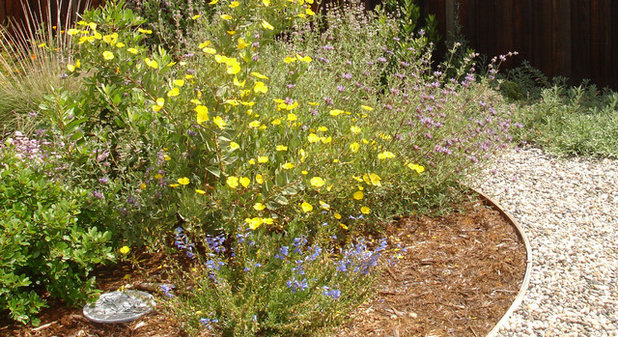
L. A. Peluso Designs
Creating your own native bee garden isn’t hard. By giving native bees a home, you are also creating habitat for all kinds of critters. And if you wait and watch patiently, you’ll get to see the loony parade of bee-haviors in your own home garden.





